Gymnotiformes: American Knifefishes
This order is made of the knifefishes, eel-like fishes that lack pelvic fins and have an anal fin that extends from below the head, alllllll the way to the tip of the tail. The anal fin is the main source of propulsion, allowing the fish to move both forwards and backwards. The anal opening is placed under the head or pectoral fins, because it must be forward of the anteriorly placed anal fin. The most interesting feature is the presence of electric organs, which are derived from muscle cells in most species but nerve cells in Aperonotids. Each species generates its own unique signal, which is thought to be used to navigate its environment, find food, and communicate. One species (discussed more below) uses its electric-generating capacity for other things as well.
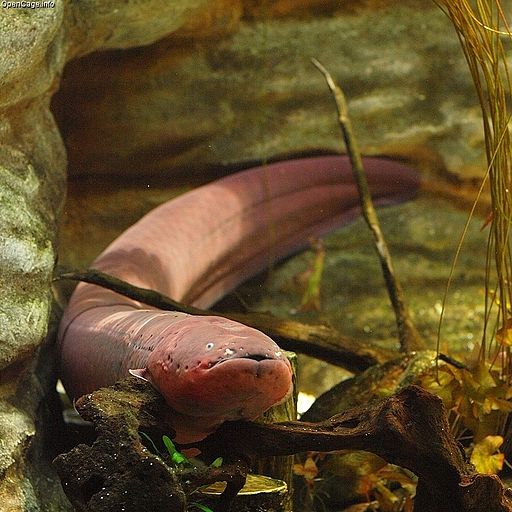
By opencage (http://opencage.info/pics.e/large_9953.asp) [CC BY-SA 3.0], via Wikimedia Commons
Gymnotoidei: Naked Knifefishes
There is one family, Gymnotidae. They have very long bodies with many vertebrae. It contains a unique member, Electrophorus electricus, commonly known as the electric eel. Unlike the other gymnotiforms, it can generate a charge of up to 600V in order to stun its prey. But it doesn't stop there; it also has a specialized respiratory organ for breathing air, which it must do to survive. Lastly, it grows new vertebrae throughout its life (they can grow up to 2.2m). The Tennessee aquarium has an eel with a twitter account; every time it discharges to a certain threshold, a prerecorded tweet is sent out.
Sternopygoidei
Where as the gymnotids tend to have a cylindrical body, the sternopygoidids (sp?) have a more compressed body form.
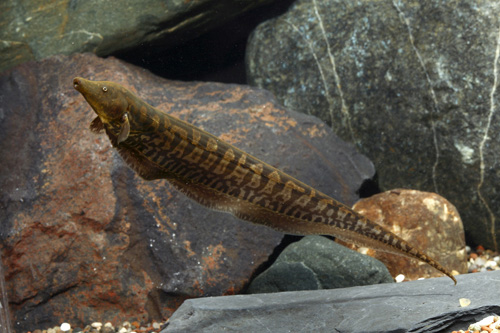
Rhamphichthyidae: Sand Knifefishes
These fishes have an elongate snout and lack teeth, giving them the alternate name of tubesnout knifefishes.
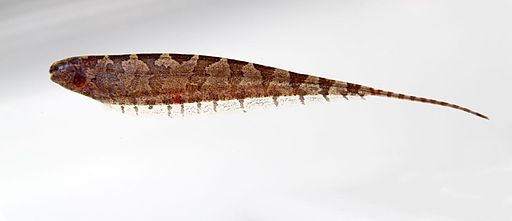
By Clinton & Charles Robertson (Flickr: Hypopomidae Steatogenys elgans) [CC BY 2.0], via Wikimedia Commons
Hypopomidae: Bluntnose Knifefishes
Although these fishes also lack teeth, they have a shorter snout than their relatives mentioned above. They are among the smallest of knifefishes, thus they are sometimes called leaf or grass knifefishes.
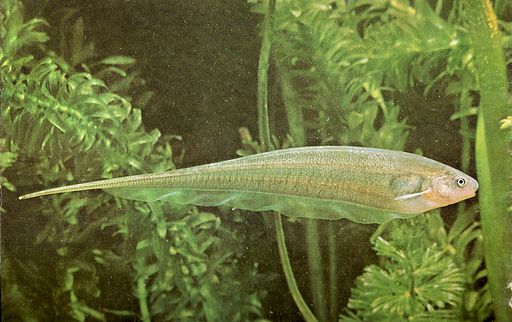
By Luis Ruiz Berti (Own work) [GFDL (http://www.gnu.org/copyleft/fdl.html), CC-BY-SA-3.0 or CC BY-SA 2.5-2.0-1.0], via Wikimedia Commons
Sternopygidae: Glass Knifefishes
This knifefish was never allowed to play outside with its friends, because it's so fragile. They are relatively translucent and have been known to swim vertically (fascinating). One species, Eigenmannia vicentespelaea is the only gymnotiform to live in caves (doubly fascinating).
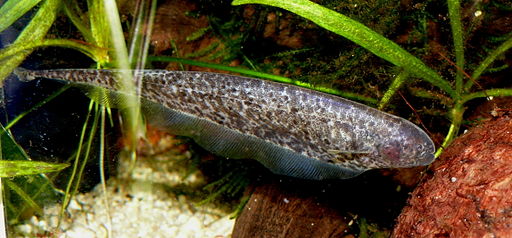
By Haplochromis (Own work) [GFDL (http://www.gnu.org/copyleft/fdl.html) or CC BY-SA 3.0], via Wikimedia Commons
Apteronotidae: Ghost Knifefishes
Ooooooooh, something spooky is here! Oh wait, it's just the ghost knifefish. They have a teeny caudal fin at the tip of the tail, not united with the anal fin, as well as a "fleshy dorsal organ" similar to an adipose fin. These guys are the ones that have neurogenic electric organs, different than that myogenic organs of the rest of the gymnotiforms.